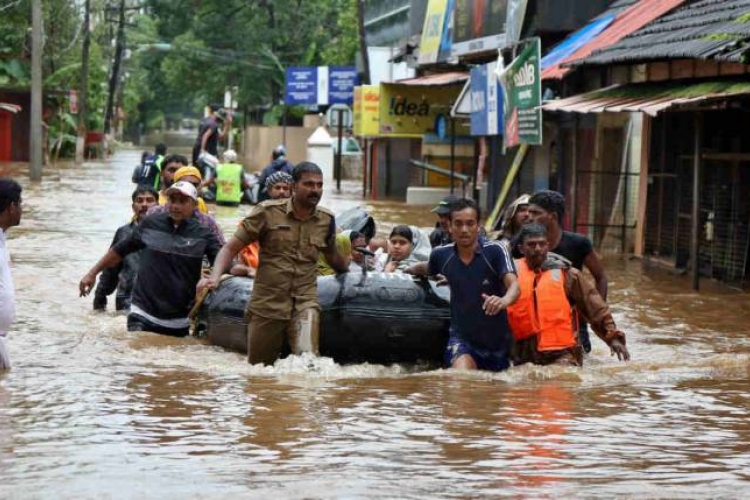National Disaster Response Fund
IN NEWS
The Union government has declared the Kerala floods a “calamity of severe nature”.
According to the National Disaster Management Policy, the State governments have to provide disaster relief from their respective State Disaster Response Funds (SDRFs), and only for a “calamity of severe nature”, will additional assistance be provided from the National Disaster Response Fund (NDRF). There is, however, no provision in the law or rules for the government to designate a disaster as a “national calamity”.
FUNDING OF STATE AND NATIONAL DISASTER RESPONSE FORCE
The NDRF is funded through a National Calamity Contingent Duty levied on pan masala, chewing tobacco and cigarettes, and with budgetary provisions as and when needed. A provision exists to encourage any person or institution to make a contribution to the NDRF. However, this source of funding has not been tapped so far, according to the government.
The 14th Finance Commission recommended changes to this structure once the cess was discontinued or subsumed within the Goods and Services Tax. However, the government, instead, decided to continue with the National Calamity Contingent Duty even in the GST regime. The SDRF corpus is contributed by the Union government and the respective State governments in a 75:25 ratio for general category States and 90:10 for Special Category States.
The allocation of the SDRF for each State is done by the Finance Commission, and the Centre contributes its specified share each financial year. The Central share of SDRF is released in two equal instalments, in June and then in December.
ABOUT NDRF
NDRF is India’s elite disaster mitigation combat force established under The Disaster Management Act, 2005. It was established in 2006 and is headquartered in New Delhi. It functions under Union Ministry of Home Affairs.
It is mandated to undertake special disaster response, relief, rescue operations and combat roles independently in the case of an event of any disaster (natural or man-made), accident or emergency. It also assists local authorities in launching a quick rescue and response operation to save life and property.
The Disaster Management Act has statutory provisions for constitution of National Disaster Response Force (NDRF) for the purpose of specialized response to natural and man-made disasters. Accordingly, in 2006 NDRF was constituted with 8 Battalions. At present, NDRF has a strength of 12 Battalions with each Battalion consisting of 1149 personnel. The practice of “proactive availability” of this Force to the States and that of “pre-positioning”, in a threatening disaster situations have immensely helped minimise damage, caused due to natural calamities in the country.
National Disaster Response Fund
The National Disaster Response Fund (NDRF), constituted under Section 46 of the Disaster Management Act, 2005, supplements SDRF of a State, in case of a disaster of severe nature, provided adequate funds are not available in SDRF.
State Disaster Response Fund
The State Disaster Response Fund (SDRF), constituted under Section 48 (1) (a) of the Disaster Management Act, 2005, is the primary fund available with State Governments for responses to notified disasters. The Central Government contributes 75% of SDRF allocation for general category States/UTs and 90% for special category States/UTs (NE States, Sikkim, Uttarakhand, Himachal Pradesh, Jammu and Kashmir). The annual Central contribution is released in two equal installments as per the recommendation of the Finance Commission. SDRF shall be used only for meeting the expenditure for providing immediate relief to the victims.
Disaster (s) covered under SDRF: Cyclone, drought, earthquake, fire, flood, tsunami, hailstorm, landslide, avalanche, cloudburst, pest attack, frost and cold waves.
Local Disaster: A State Government may use up to 10 percent of the funds available under the SDRF for providing immediate relief to the victims of natural disasters that they consider to be ‘disasters’ within the local context in the State and which are not included in the notified list of disasters of the Ministry of Home Affairs subject to the condition that the State Government has listed the State specific natural disasters and notified clear and transparent norms and guidelines for such disasters with the approval of the State Authority, i.e., the State Executive Authority (SEC).


 "UPSC-2026-PRELIMS COMBINED MAINS FOUNDATION PROGRAMME" STARTS WITH ORIENTATION ON FEB-10
"UPSC-2026-PRELIMS COMBINED MAINS FOUNDATION PROGRAMME" STARTS WITH ORIENTATION ON FEB-10